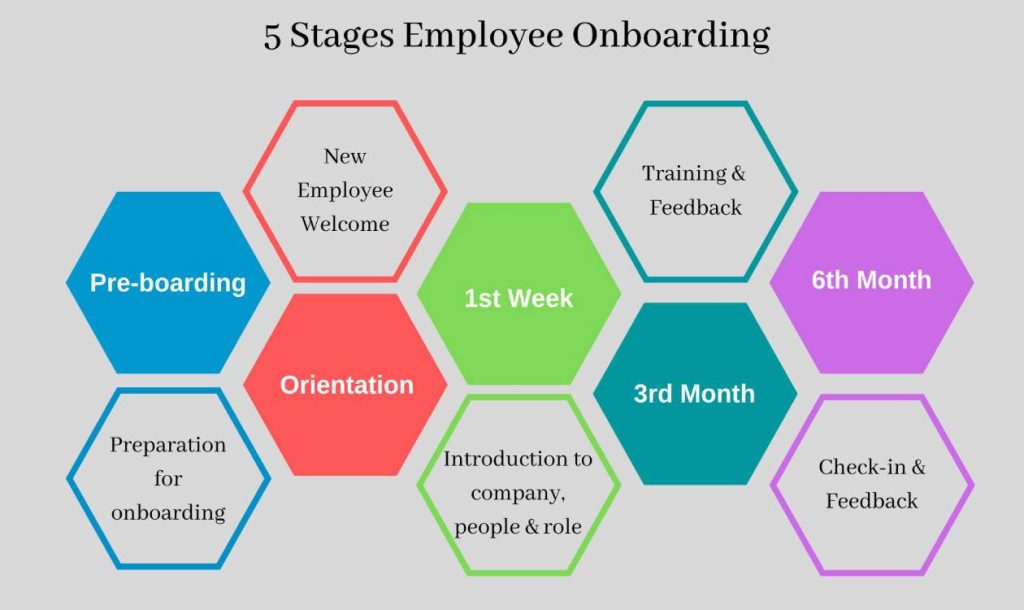Software Developer Onboarding Process: Best Practices for a Remote Team Extension

What are some best practices for the software developer onboarding process?

Every day, software companies introduce new software or apps to the market. New apps that simplify matters such as input and data analysis are being published frequently. Eventually, they follow an efficient onboarding technique to hire and fire team workers for their software development program. Companies focus on extending their workforce with more talented and professional freelancers to achieve desired outcomes. Team extension’s primary benefit is to give companies access to a vast pool of qualified and experienced developers. Although such applications make work efficient and more accessible, the software is difficult to understand at first.

This is where software developer onboarding comes in.
New employees learn the information, skills, and traits to contribute effectively to the business through onboarding. Software onboarding is very similar to software training in technology; it enables you and your team to grab success by preparing your team to use the new program accurately. The user experience is the focal point of software onboarding. This is because software engagement level directly affects how successfully people learn, how motivated they are, and how satisfied they are with your product. Although some people doubt the method and believe they can self-educate, which is not viable. Employees need to receive professional training and guidance so that they may see the software as efficiently as it is used.
Why is the Software Developer Onboarding Process Important?
We must follow the complete procedure to achieve all the advantages of software onboarding. The key steps are:
- Revise software developer onboarding processes
- Use the latest technology
- Train your employees
The software onboarding team will create a personalized project plan for each person to help them navigate the migration and implementation phase based on their circumstances, current setup, and objectives. Professional onboarding by experts, who are well-versed in the program, is an excellent guide. The benefits of the software developer onboarding process are:
- The onboarding process data helps understand the user’s problems and priorities better. This allows the teams better understand the customer.
- Affirmative onboarding experience reduces irritation, burnout, and desertion.
- Users are also more productive and efficient with a good onboarding exercise.
Best practices for remote team extension-Software Developer Onboarding Process:
These days, the number of remote workers is rising significantly. By collaborating with remote employees to understand their needs, businesses revolutionize the onboarding process. A successful developer onboarding program can enhance various corporate strategies. Because team expansions increase productivity and efficiency, companies strive to include remote/hybrid work technologies into their workflows. Adding a diverse group of competent individuals, such as a provider with years of expertise in the service area, makes finding and hiring the right talent easier.
Here are some software onboarding techniques for remote team extensions that will promote a sense of camaraderie among the remote employees, improve company performance, and minimize turnover:
1. Use remote-access software:
A top-performance team depends on using the remote technologies regardless of where they function. You must engage in the technology to fill the physical void since reliable, robust, and well-maintained infrastructure is the cornerstone of successful teleworking and smooth interaction. Your remote teammates can seamlessly engage in practical business activities with the help of solutions like video codec, conference agenda services, and documented platforms.
2. Use quick messaging services:
Any workforce, albeit remote or based in an office, can experience problems with inefficient communication. Technologies for quick messaging, like Slack, can improve office communication and productivity. A communication strategy with group systems is necessary for successfully managing a collaborative environment. By putting these into practice, you’ll be capable of understanding how people connect and establish clear standards. The foundation rules for discussions are comparable to team operational contracts. The distinction is that they go beyond a meeting and cover the entire project.
3. Allow flexible working hours and time zones:

Due to its easy employment conditions that enable them to manage their work and home life better, many individuals want to work virtually. Workers who can successfully manage their private life will be less likely to get sidetracked by work-related personal responsibilities. Thus, allowing for flexible schedules and temporal zones will promote healthier professional habits, improve performance growth, and make remote teams more content.
While working remotely, team players can handle tasks such as child care, delivery pickup, lunch preparation at home, and calendar management. In addition, employees can manage their personal life and experience less stress when they are free from regular 9-5 routines.
4 Plan routine video calls:

You can resolve multiple issues in supervising a remote workforce via teleconferencing. First, video calls encourage better interaction since body posture and visual signals are essential to deciphering intention. Addressing your remote team members by video helps ensure that project objectives are apparent, as issues can often get mistranslated via text. Finally, try to get remote workers’ opinions whenever it’s time to get feedback—set up regular staff meetings where you discuss all projects using software like the Fellow app. Therefore, remote employees will feel more part of the company if they communicate consistently and frequently.
5. Clarify your requirements and objectives:
A successful leader focuses on actions, results, and behavior by establishing broad objectives and expectations.
It’s crucial to plan ahead and intentionally set the tone for your remote working culture.
Setting up specific expectations will help in clean-cut communication. Instead of concentrating on how long it took them to finish anything, focus more on what has been achieved. Pay attention to the critical metrics while managing a remote team.
Lack of time management skills can blur your team extension goal. Your team must complete projects on schedule. Adopting a more efficient and strict plan is crucial. Your team employees must follow strict deadlines and submit their assigned tasks with no delay.
6. Your team’s values are essential!
Since companies provide onsite employees with limited access to the corporate culture, distant employees are more likely to feel alienated from the workplace. However, they will integrate more quickly if the team, software developers, and owners connect values.
When you’re in charge of hiring the virtual team, you look for growth driven by the team. You also notice freelancer who adheres to the same objectives as your business. Your team values must be compatible with you and your business.
Let’s Wrap Up!- Software Developer Onboarding Process
Remote working is an excellent way to build strong and mutual business relations with your employees. If you have a well-planned software developer onboarding process strategy, you can get higher retention rates, solid brand identity, and other effective results.
Additionally, a general increase in everyone’s productivity and work-life balance is seen when the commute times are taken out. Benefits include reduced infrastructure, lower rent, fewer absences, and greater flexibility. Hence, if you select freelancers for your software development program, follow the above team extension tips. First, however, you must scan this checklist to ensure you choose the correct onboarding technique.

